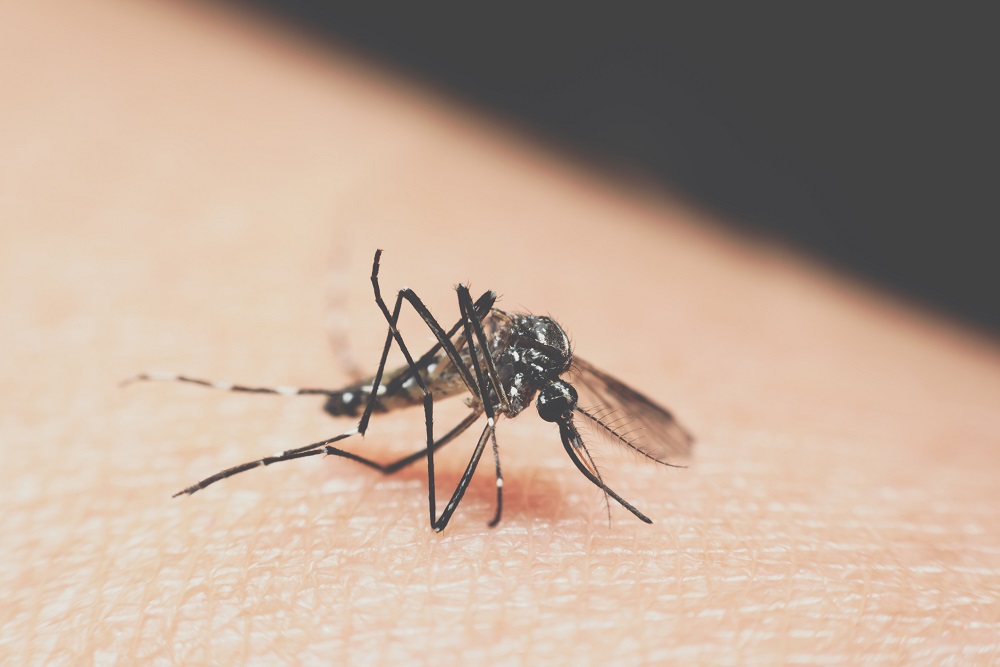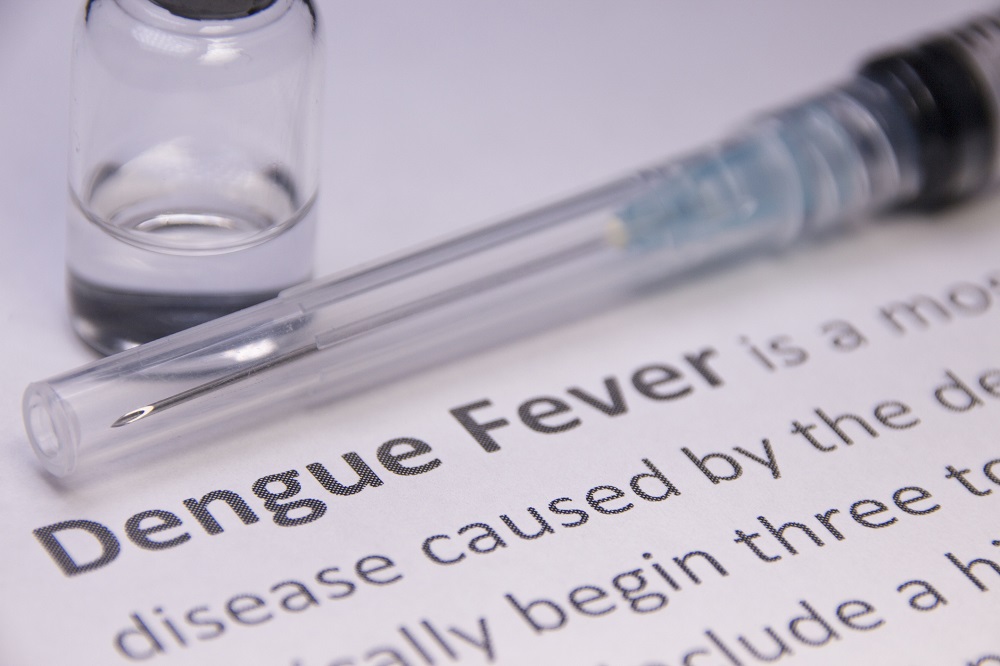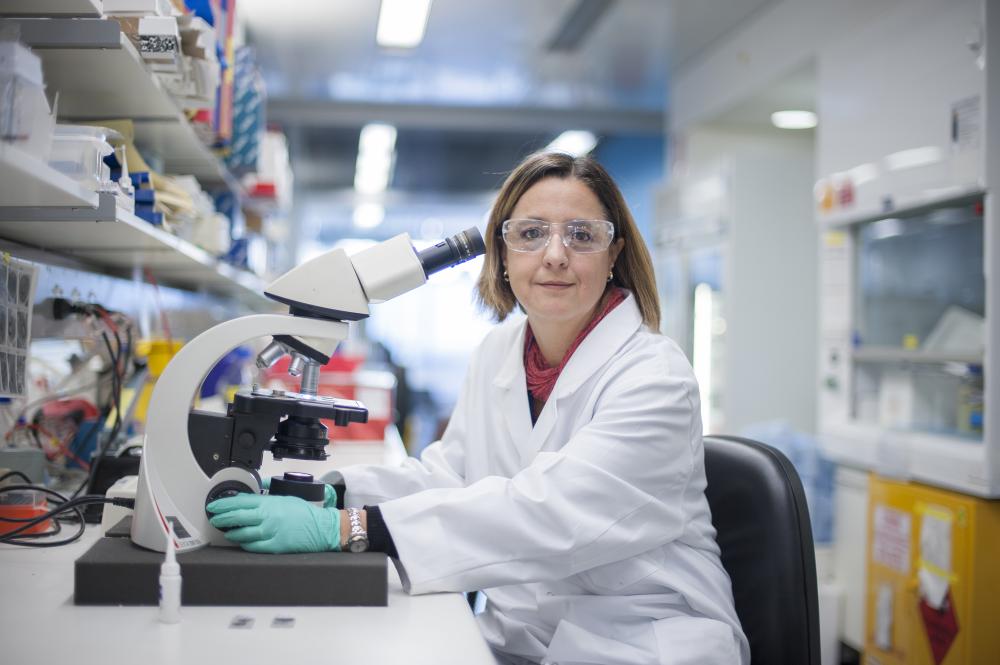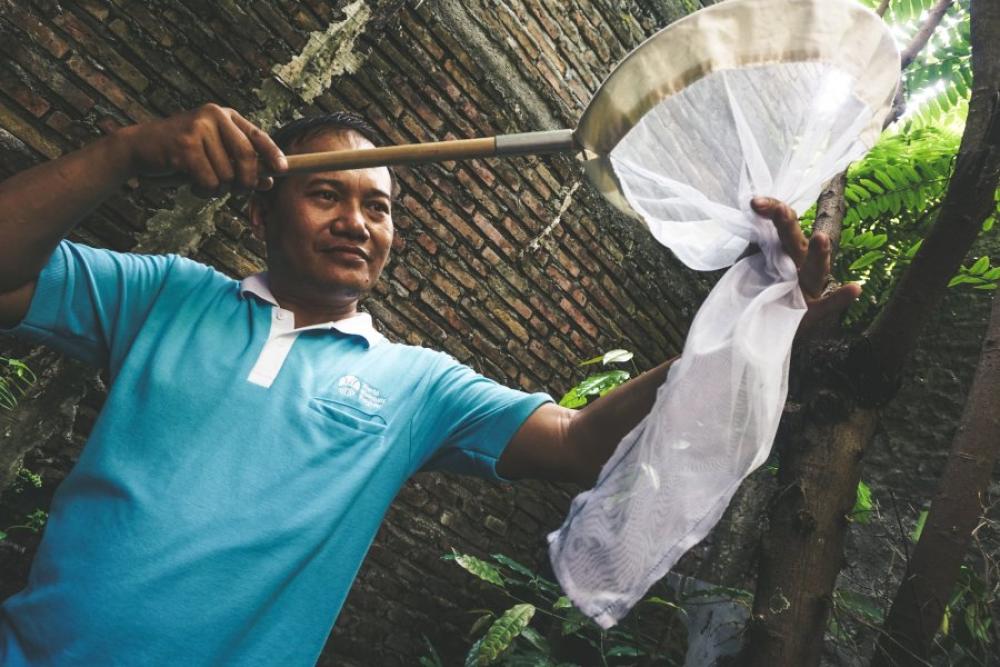The spread of Japanese encephalitis virus in south eastern Australia is a reminder that mosquito-borne viruses pose an ongoing threat to lives and livelihoods, particularly in our region. That includes dengue fever spread by the Aedes aegypti mosquito. Australian researchers are collaborating closely with colleagues on two fronts – to eradicate the virus and find biomarkers that will lead to better diagnosis and treatment.
In November 2021, the Jakarta Disaster Mitigation Agency (BPBD Jakarta) issued flood warnings for the capital and surrounding area with the return of La Niña – accompanied by warnings of a surge in dengue fever.
By December, there were reports of hospitals in India struggling to cope with dengue fever admissions.
The effects of La Niña have been felt across the region, providing optimal breeding conditions for Aedes aegypti, the mosquitoes that transmit the dengue virus to humans.
Australian researchers and colleagues in the region are working together to address this regional disease burden.
Developing diagnostics for dengue
Unlike malaria, which is caused by a parasite, dengue fever is caused by a virus. When the virus is transmitted by an Aedes aegypti mosquito, the human response can be to develop a fever. There are four types of dengue virus that can cause fever: types 1, 2, 3 and 4. One virus type only provides short-term cross-reactive immunity to the other. The human response can also vary. Importantly, subsequent infections after the first presentation can be more severe, from acute flu-like symptoms to the most severe, haemorrhagic fever.

Although there is no specific treatment for dengue, the World Health Organization says “early detection of disease progression associated with severe dengue, and access to proper medical care lowers fatality rates of severe dengue to below 1 per cent”.
Bali is the Indonesian province where dengue fever is the most endemic with the highest incidence rates in Indonesia, according to 2020 Indonesian Ministry of Health figures.
Scientists from the Eijkman Institute for Molecular Biology in Indonesia, WEHI in Melbourne and Nagasaki University in Japan are working together on an NHMRC e-ASIA Joint Research Program-funded project recruiting patients in Bali suffering from dengue fever for studies on the human response to the virus.
The e-ASIA project is focussed on early prevention and aims to recruit patients with mild dengue and others with severe dengue. Blood samples from those patients collected at first presentation will undergo a comprehensive immunological and molecular analysis to compare the human response to mild versus haemorrhagic dengue fever, with the aim of identifying factors predisposing to severe disease.

The Eijkman Institute will conduct dengue virus serotype determination and genome sequencing of the virus, as well as peripheral blood mononuclear cell isolation and cytokine/chemokine expression profiling. Other immunological examinations, such as IgG antibody detection, plaque reduction neutralisation tests and antibody-dependent enhancement assays will be carried out at Nagasaki University in Japan.
Meanwhile, at WEHI in Melbourne, Associate Professor Diana Hansen, Laboratory Head in Infectious Diseases and Immune Defence, will use high-dimensional mass cytometry and RNA-sequencing to understand the key processes responsible for disease severity.
“In clinical research, we can take blood samples and isolate plasma or sera to look at antibody responses or anti-inflammatory responses. White blood cells from the immune system are precious material for us in immunology,” she says.
“You can do a range of things. You can look at different proteins that those white cells are expressing – that tells us about their function – and then we can get inside the cell and see what genes are being expressed, or not, in different presentations and conditions.”
This dengue immunology study will be the first of its kind, piece by piece understanding the impact of the virus on humans, in research that will also have an impact on the health system.

'When people present at hospital after two to three days of fever, it’s impossible to predict if they’re going to develop dengue fever or haemorrhagic dengue fever,' Associate Professor Hansen says.
'Mostly, staff admit them to hospital because they’re afraid they’re going to develop HDF (haemorrhagic dengue fever), erring on the side of caution. But it is expensive.
'We’re aiming to identify biomarkers that have diagnostic value for dengue.'
Innovative diagnostic tools for early detection of cases that will progress to complicated dengue will help with development of new treatments, as well as case management in hospitals.
Dr Tedjo Sasmono, Senior Research Fellow and Head of the Dengue Research Unit of the Eijkman Institute in Jakarta, says the e-ASIA collaboration allows Indonesian scientists to share their knowledge on tropical diseases such as dengue and malaria and share patient samples, while the Australian scientists can provide expertise in immunology, training in specific techniques and access to equipment not available in Indonesia.
'It is hoped that this collaboration will advance the capability, knowledge and skill of both parties in infectious disease research,' Dr Sasmono says.
Associate Professor Hansen adds that the incidence of dengue is increasing.
'It’s really important to remember that these infections are endemic and should not be neglected,' she says.
Introducing ‘elimination’
Professor Cameron Simmons worked in Vietnam at the Hospital for Tropical Diseases in Ho Chi Minh City for 13 years where he developed dengue expertise firsthand.
'I was seeing patients with dengue on a daily basis. My kids had dengue, my partner and I had dengue. The burden of dengue to the healthcare system and in the community was enormous and represented about a third of all the inpatients on an annual basis in this hospital,' he says.
Professor Simmons is now Director of the Institute of Vector-Borne Disease at Monash University and Director of the Oceania Hub of the World Mosquito Program (WMP), and he says they are now working towards a dengue elimination strategy.

Professor Simmons’ team from Monash University, with colleagues at the University Gadjah Mada in Yogyakarta, Central Java, recently published ground-breaking randomised trial results in the New England Journal of Medicine showing the incidence of dengue fever had dropped by 77 per cent in areas where the infected mosquitoes were released.
What started as randomised trials releasing Wolbachia-infected mosquitoes in clusters across the city of half a million people is now being expanded to include neighbouring urban districts so that, by the end of 2022, two million people will be living under the protective umbrella of Wolbachia. This will provide a city and district-wide example of the Wolbachia intervention as a solution to a significant public health problem.
This work was started 15 years ago by Professor Scott O’Neill, first at Yale University and then at the University of Queensland. Professor O’Neill led deployment of Wolbachia in far north Queensland communities between 2011 and 2017, resulting in a “dengue free North Queensland for the first time in 100 years”. More than $43.2 million has been invested through NHMRC between 2011 and 2021 to fund 46 projects investigating dengue fever.
Professor Simmons has received a number of dengue-related grants and in 2019 was awarded an Investigator Grant to progress the application of Wolbachia pipientis for biocontrol.
Professor Cameron told the ABC: 'In public health, 77 per cent is a really, really big impact.'
Professor Simmons’ colleague, Dr Adi Utarini, a Professor in the Department of Health and Policy Management at Universitas Gadjah Mada, was Project Leader for Eliminate Dengue Project-Yogyakarta (2013-2019) and lead author on the New England Journal of Medicine paper.
Speaking to the Talking Indonesia podcast, Professor Utarini highlighted that any expansion of Wolbachia trials depends on working with the community as well as government.
'Any innovation, it carries some risks, so the risk also needs to be understood by the community and by the government,' she said.
Talking about the trials in Yogyakarta, she said, 'Long before we release the mosquitoes, more than a year, we started talking to the community about dengue, understanding how they feel about the disease, what's their observation, how they see it in the community, whether this is a disease which is important to them or not.'
'The next step is we talk about how is the disease transmitted; the role of the mosquitoes, the role of the dengue virus, this we need to understand with them to what extent they understand the mosquitoes’ behaviour in the community and how human interacts with the mosquitoes. Only after that, then we try to explain to them that what we are fighting is actually the virus which inside the mosquito body.
'In that way, I think, step by step the community began to see okay, this is what the intervention is trying to do and this is the mechanism to make it work. With that understanding then they are accepting the technology.'
Professor Utarini’s team worked with primary health care to trace patients in hospitals back to their homes, to identify whether they lived in an area where the Wolbachia bacteria had been released.
As well as demonstrating a 77 per cent reduction in virologically confirmed dengue cases, the trials saw an 86 per cent reduction in dengue hospitalisations.
Professor Simmons says the trials in Indonesia demonstrate to international governments and the World Health Organization that the intervention works. WHO is now developing a policy recommendation he says is hoped will show national governments affected by dengue that this intervention is a recommended feature of national dengue control programs.
'For 50 years, the world's been trying to swat and spray and reduce breeding sites where this mosquito thrives but none of it has been demonstrated to control dengue very well.
'We're quietly optimistic that, when deployed at scale in urban areas in endemic countries where this mosquito is the primary vector of this disease, we're going to eliminate dengue as a public health problem.'
NHMRC Research Excellence Award recipient Associate Professor Nigel Beebe is also working on the use of Wolbacia bacteria as an environmentally-friendly biological mosquito control for Australia, the Indo-Pacific region and beyond. Read more about his work in InFocus